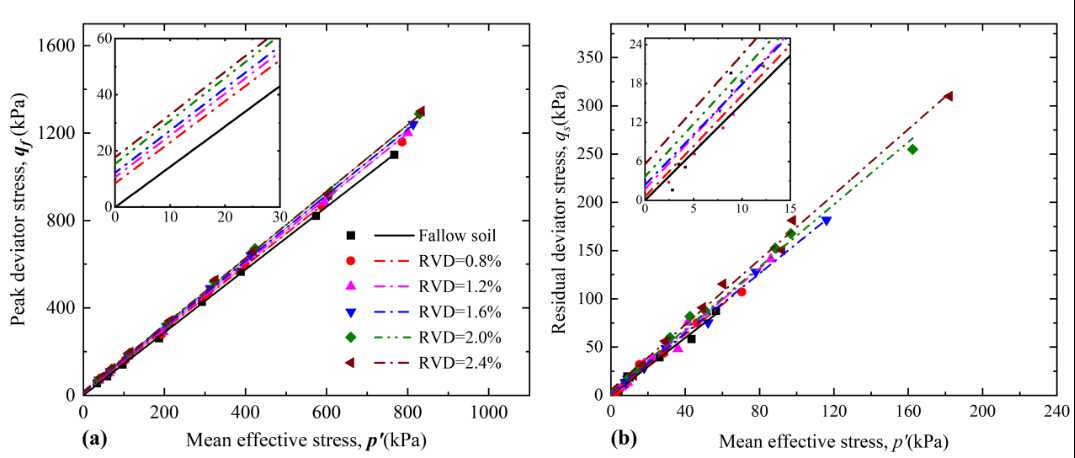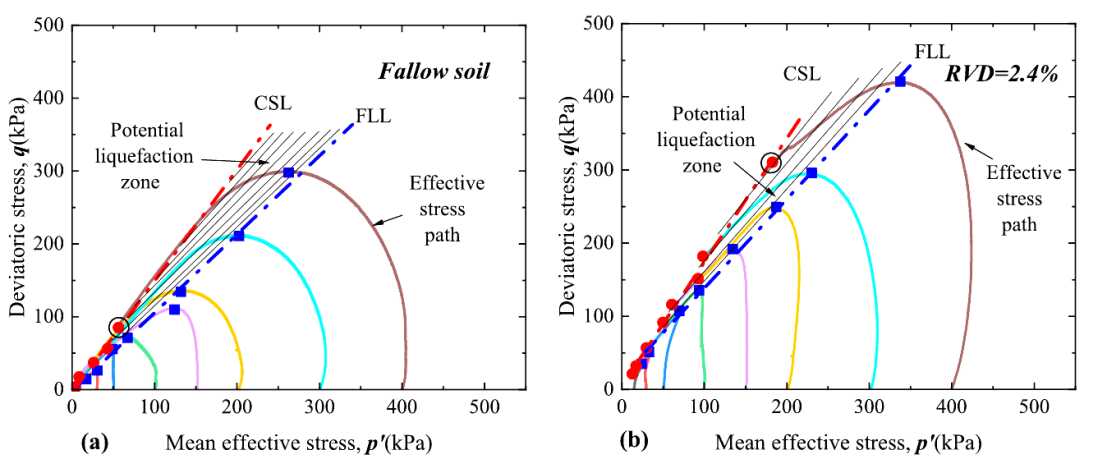Saturated sand is highly susceptible to severe liquefaction and instability under seismic loading and intense rainfall, posing significant threats to mountainous infrastructure and ecological security. Traditional engineering reinforcement measures are often costly and lack adaptability, highlighting the urgent need for green, efficient, and eco-friendly reinforcement technologies. Led by Dr. JIANG Yuanjun’s team at the Institute of Mountain Hazards and Environment, Chinese Academy of Sciences, this study focuses on the enhancement effect of plant roots on the shear strength and liquefaction resistance of sandy soils. The team addresses a key scientific question: the evolution of shear strength and the critical state path response of root-soil composites.
To investigate this, the research team established a laboratory triaxial shear testing system, preparing root-soil composite specimens by mixing Cunninghamia lanceolata (Chinese fir) roots with sand. Five levels of root volume density (0.8% to 2.4%) and a confining pressure range up to 400 kPa were designed, resulting in a total of 96 consolidated-drained (CD) and consolidated-undrained (CU) triaxial tests. The results indicate: (1) the roots form a uniform "micro-fiber network" within the soil matrix, significantly increasing both peak and residual shear strength; (2) under undrained conditions, root inclusion effectively suppresses the accumulation of excess pore water pressure, reducing the soil brittleness index by nearly 50%, and substantially enhancing liquefaction resistance; (3) the critical state line (CSL) of root-soil composites rises with increasing root density and exhibits clear stress path dependency—this study provides the first experimental evidence that the CSL behavior of root-reinforced soils is influenced by the loading path.
This research provides both experimental evidence and constitutive modeling basis for eco-friendly slope stabilization and liquefaction mitigation using plant roots. The related findings have been published in Acta Geotechnica and supported by the Strategic Priority Research Program of the Chinese Academy of Sciences (XDA23090202), the International Science and Technology Cooperation Program of China (2018YFE0100100), and the National Natural Science Foundation of China (42172320).
Link :
Jiang, Y., Xia, X., Hu, X., & Zhu, Y. (2025). Effect of root volume density on the mechanical behaviour of saturated sand under drained and undrained conditions. Acta Geotechnica, 1–25.
https://doi.org/10.1007/s11440-025-02605-y

Fig. 1:The critical stateline of the root-soil composites (Image by JIANG Yuanjun)

Fig. 2:Effective stress path and potential liquefaction range of specimens under undrained conditions (Image by JIANG Yuanjun)
